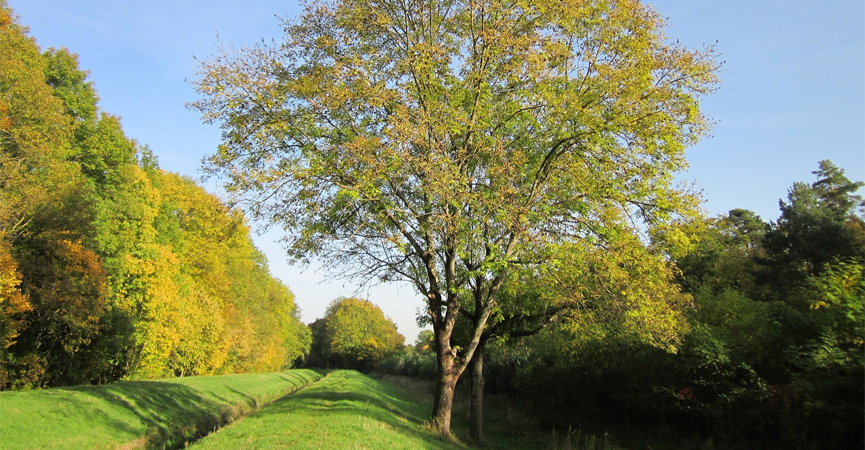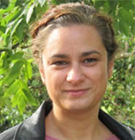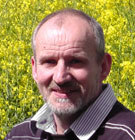Surviving killer fungus
Posted on 20 June 2018
As a deadly fungal disease infects more and more of Britain’s ash trees, our researchers are studying ash species that resist the disease and could replace lost trees.

A European ash tree. Ash trees are vitally important for many plants and animals, and are a key feature of British woodlands.
We can use these trees in future breeding programmes to try to repopulate ash in the UK
Ash trees provide shelter and food for over 1,000 species in Britain. Many plants and animals depend on ash for their survival, and for centuries the tree has featured in art and literature.
But a deadly fungus is infecting ash trees throughout the UK. The fungus, Hymenoscyphus fraxineus, causes ash dieback disease, which has devastated mainland Europe’s ash population. In Denmark, over 90 per cent of ash trees have been affected by the disease – Britain faces a similar threat.
Blowing in the wind
The first instances of ash dieback disease in Britain appeared in the southeast, suggesting wind-blown fungal spores entered from the continent. It’s extremely difficult to eradicate the disease; a chemical treatment for the fungus is unknown and its spores are carried by the wind for up to 10 miles and can litter woodland floors for years.
While many ash trees are highly susceptible to infection, small groups of trees have shown resistance to the disease, despite years of exposure. Now, York biologists have identified features of these tolerant trees that mark them out from susceptible varieties, giving hope that lost trees could be replaced.
Genetic markers
Working with a diverse sample of Danish ash trees, York researchers used a gene sequencing technique known as associative transcriptomics to identify genetic markers associated with resistance to ash dieback disease. Genetic markers are points of difference that can identify individual species and be used to correlate disease inheritance with a gene.
Many of the genes connected with resistance to ash dieback disease affect how trees function in other ways. In some plant species, the gene affects the timing of their flowering and bud burst. Some of the genes support plants in becoming more and more resilient against pathogen attacks as they develop - a phenomenon known as age-related resistance.
Dr Andrea Harper, lecturer in plant biology at York, explains the importance of the team's findings:
“With these markers, we now have a test that allows us to go out into the wild and identify trees that should be quite tolerant to ash dieback disease. We can then use those trees in future breeding programmes to try to repopulate ash in the UK.
“The genes associated with resistance to ash dieback disease regulate the expression of other genes. We’re now working to establish how these changes in gene expression modify the physiology of the tree and exploring how this knowledge could help with management of ash dieback and other tree diseases.”
Watch Dr Harper and Professor Ian Bancroft, Chair of Plant Genomics at York's Centre for Novel Agricultural Products, talk about this research in this video produced by BBSRC.
This research was supported by funding from Defra and BBSRC, with collaborators at the John Innes Centre, The Genome Analysis Centre, University of Copenhagen, Queen Mary University London, Earth Trust and Forest Research.
The text of this article is licensed under a Creative Commons Licence. You're free to republish it, as long as you link back to this page and credit us.

Dr Andrea Harper
Dr Harper's research focuses on developing statistical genetics approaches which are capable of associating trait variation with different types of genetic markers and flexible enough to be adapted to a range of plant species.

Professor Ian Bancroft
Professor Bancroft is an expert in plant genomics who formerly worked at the John Innes Centre in Norwich.
Discover the details
Take a look at images taken when Julian Rush met with Professor Bancroft and Dr Harper for a BBC Radio 4 programme on the BBC Radio 4 website
Explore more research

A research project needed to spot trees on historic ordnance survey maps, so colleagues in computer science found a solution.

We’re using gaming technology to ensure prospective teachers are fully prepared for their careers.

A low cost, high-accuracy device, could play a large part in the NHS's 'virtual wards'.
